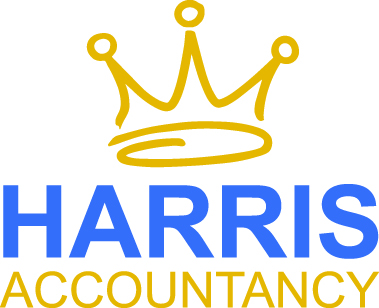 Following on from Heidi’s previous article giving top tips for successful investments this article highlights the main pros and cons of loans and equity for social enterprises and charities that are seeking finance or investment. The subsequent article – Part Two – looks at quasi-equity and the availability of tax reliefs for the different options and will be out in the next few days.
Following on from Heidi’s previous article giving top tips for successful investments this article highlights the main pros and cons of loans and equity for social enterprises and charities that are seeking finance or investment. The subsequent article – Part Two – looks at quasi-equity and the availability of tax reliefs for the different options and will be out in the next few days.
What’s available with your legal structure?
Charities can only take on loans as they are set up as limited by guarantee companies or unincorporated organisations with no shares. Most social enterprises and Community Interest Companies (CICs) are also set up as companies limited by guarantee so can also only have loans. Approximately 10% of CICs are limited by share, so they can issue different types of shares. There are increasing numbers of CICs registering with this type of legal structure, but this still limits the number of social enterprises that can issue shares. Community Benefit Societies and Co-operatives can issue loans or community shares which are withdrawable.
Loans (Debt)
Nearly all social enterprises and charities can take on loans (debt) unless they have restrictions in their Articles or governing documents. Loans can be:
Fixed interest, variable interest, performance related, secured or unsecured, and have early repayment charges, the option to defer or take a payment holiday, and mixed financial and social return requirements.
The Pros
- Ideal if receive payments in arrears for delivery of services
- Helps with cash flow issues
- Good for capital purchases as payments are secured against the asset
- Have been shown to enable quicker growth as organisations must become more commercial in order to meet the loan repayments
- The lender doesn’t receive a share of the organisation’s surplus/profits (unless loan interest is performance related and linked to profits), so any growth and surpluses benefit the organisation rather than the lender.
- Profit linked loans/performance related loans for CICs have their interest rate capped at 20% so the organisation knows the maximum amount of interest that will be paid. This cap does not affect other types of loans.
- The lender has no control over your business and once the loan is repaid the relationship ends.
- Unless interest paid is variable or performance related then it is possible to forecast accurately the interest payments and these can be planned for in advance.
- Interest is an allowable expense for tax purposes, which reduces the cost of borrowing for social enterprises that pay corporation tax.
The Cons
- The loan capital has to be repaid at some point unlike equity which, unless redeemable (or withdrawable for Co-ops and Community Benefit Societies), is unlikely to be repaid.
- Cashflow is required for both interest and the capital repayments which can cause difficulties if the business does not grow as planned.
- There may be restrictions on the organisation that stop it from taking on further loans or starting new areas of delivery/trading.
- Although less common nowadays, Directors may be required to provide personal guarantees for the loan capital.
- Most investors will still expect a commercial rate of interest regardless of the organisation’s social return and social impact, so doing good things for society does not reduce the cost of having a loan.
- There may be charges for defaults, late payments, early repayment plus administration or set up charges that will add to the cost of the loan.
Equity
Equity (shares) investments are only available to a small number of social enterprises.
The Pros
- The investor takes all the risk. If the organisation is not successful you are not personally liable and do not have to pay the investor back. The investor won’t receive a dividend if the company doesn’t make any profits, and if the company makes larger profits the dividends paid can be larger.
- Most shareholders take a long term view and do not expect to have their share capital repaid in the short term.
The shares can increase in value based on the value of the organisation, so the investor could sell the shares for more than they were purchased for. - Social finance organisations will often want to participate in the organisation actively, by attending Board meetings or providing an additional Director for the Board.
The Cons
- You are giving away a share of the company and if the shares are ordinary shares the investor will be able to vote and have a say in business decisions. This is why most people restrict the amount of shareholding they are prepared to give away so they don’t lose control of the organisation.
- Alternatively, you can set up different classes of shares. This is something many of our clients have done so they don’t give away any of the control or voting rights in the organisation. A second class of shares can have different restrictions on them to the ordinary shares, and you can set the dividend amounts so they are fixed in a similar way to interest payments on loans, or alternatively vary them based on the amount of profit you make.
- The main issue is that the organisation must make a profit in order to pay the dividends so if the organisation does not perform as well as expected the investors will receive no return.
- The maximum dividends that can be paid for CICs is 35% of the organisation’s profits, so investors may only receive a small return.
- Shareholders are the last to be paid, after all the other expenses and any loan interest have been paid.
- Dividends are not tax deductible, so organisations that pay corporation tax will pay tax of 20% of the amount of dividends paid out.
Redeemable shares
Redeemable shares are shares that have a set date for the organisation to buy the shares back from the investor, usually at the same value as was initially invested. This is beneficial where the original owners do not want to give control of the company away in the long term.
It is also good where the organisation expects to generate large surpluses and be able to buy back the shares in a short time period, or to provide investors with the flexibility to ask for their investment back at certain times.





